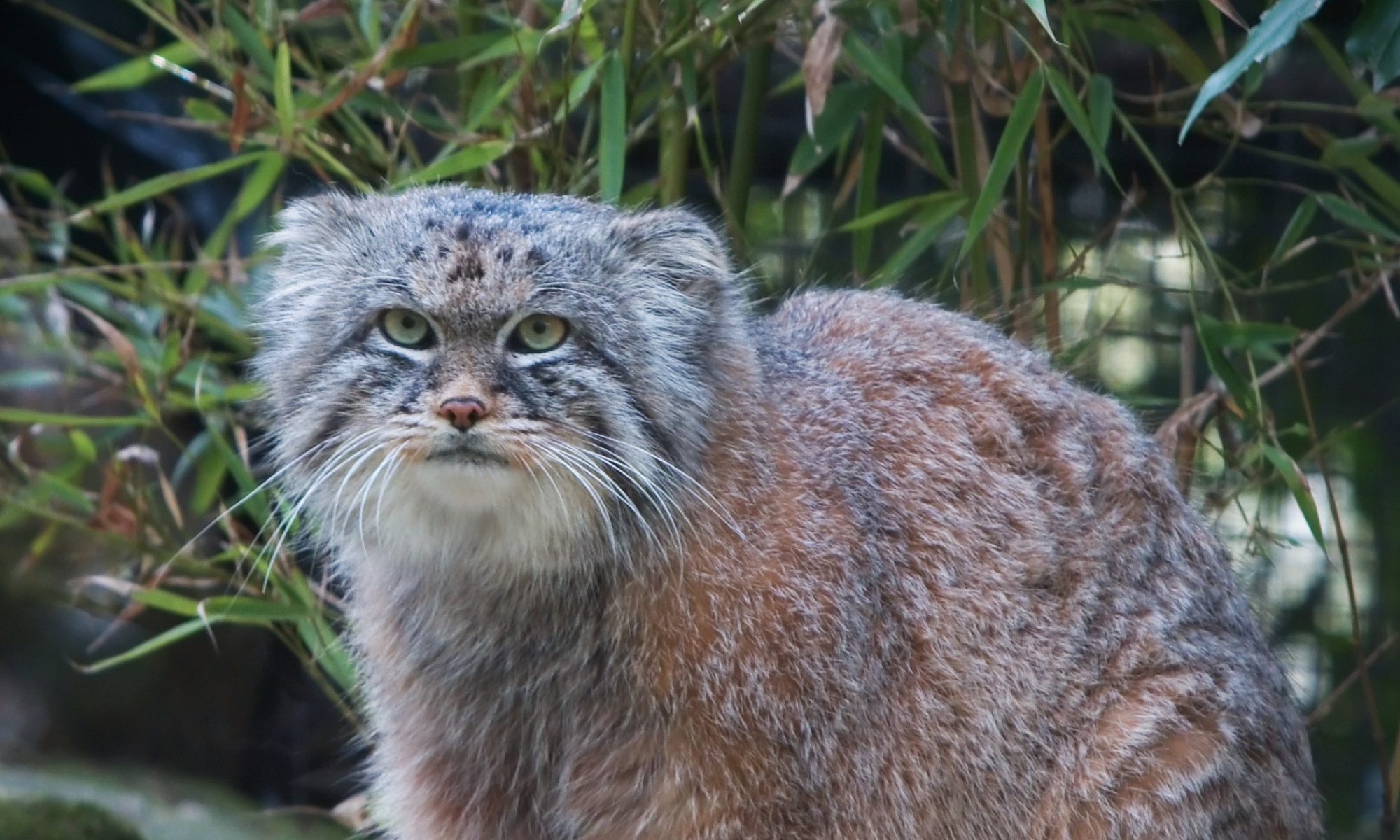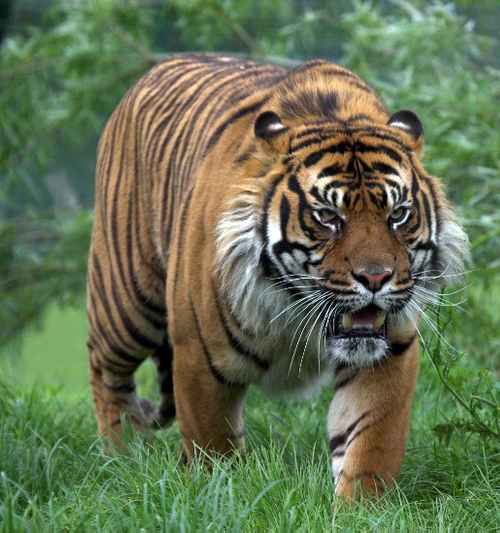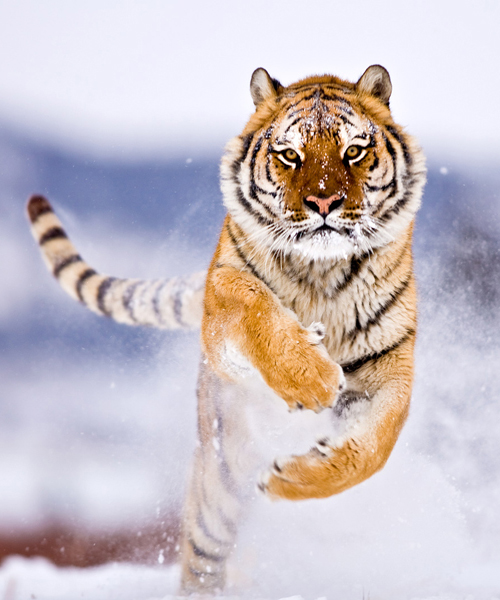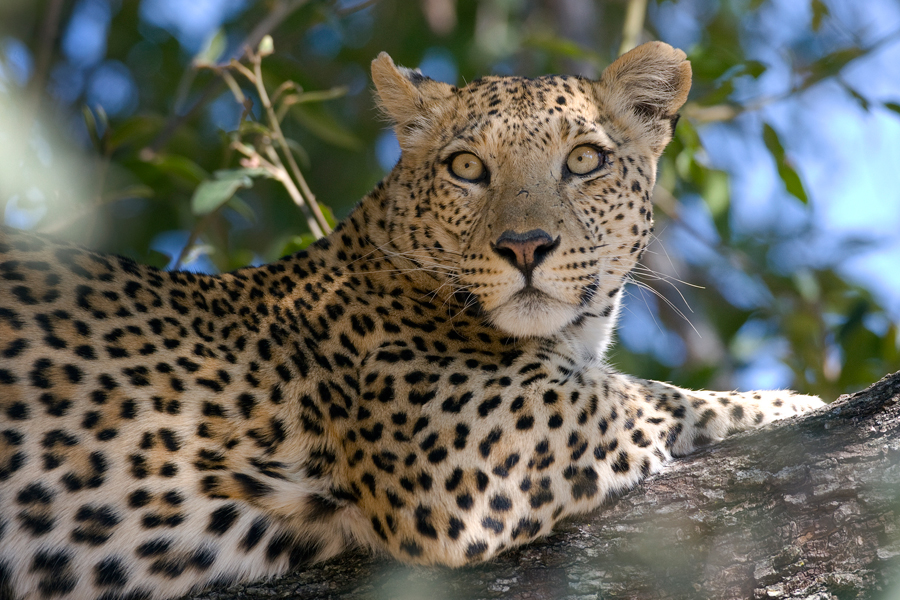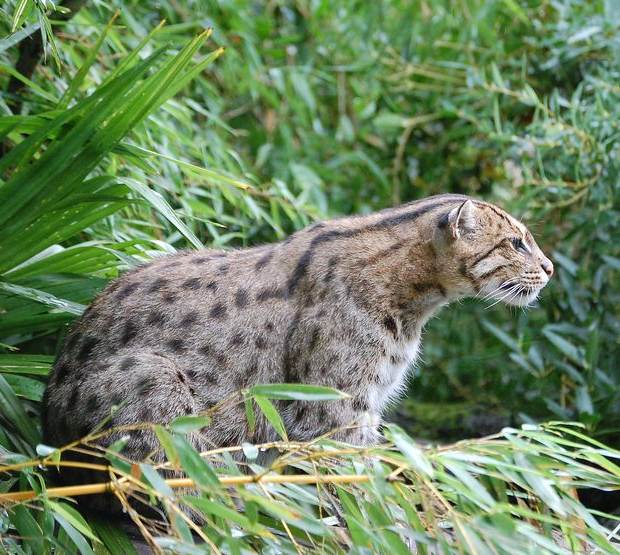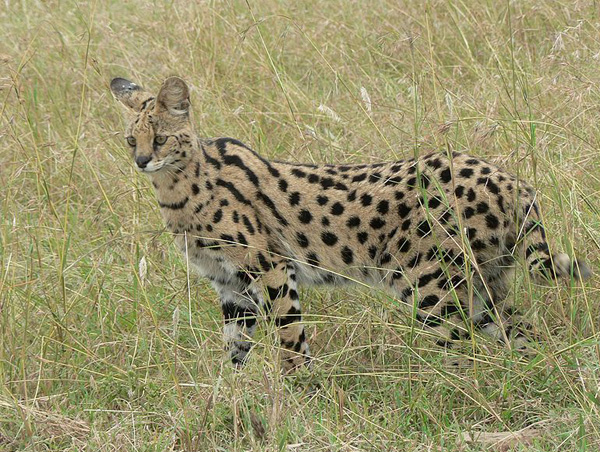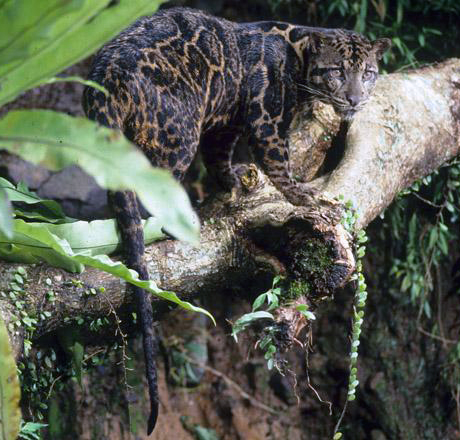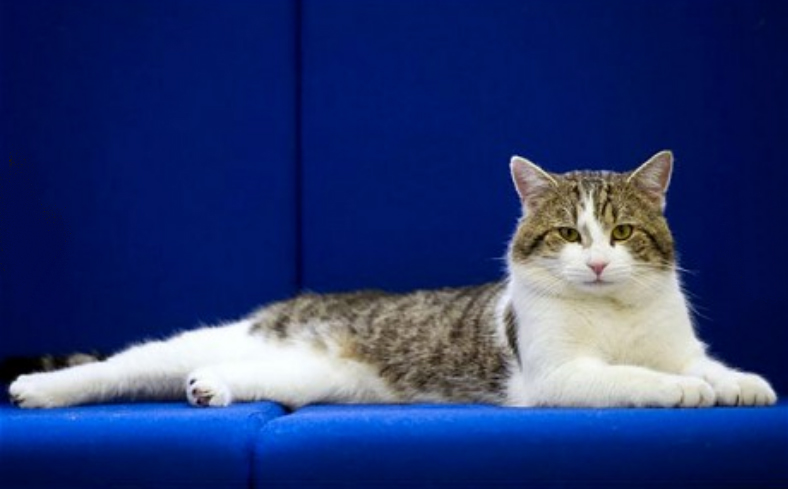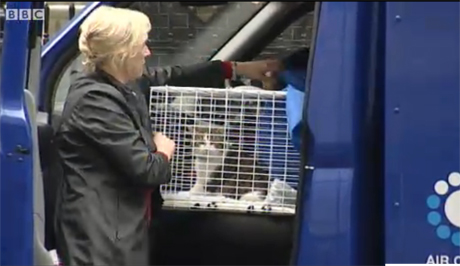Tiger
Cat of the Month ~ June 2011
The tiger is the largest of the four Big Cats in the genus Panthera.
Panthera Tigris is native to much of eastern and southern Asia though its range has been diminishing steadily for many years.
The largest (Siberian) tigers measure up to 3.3 metres (11 feet) in total length and weigh up to 300 kilograms (660 pounds). The most numerous tiger subspecies is the Bengal tiger. Tigers have a lifespan of ten to fifteen years in the wild, but can live longer than twenty years in captivity. They are a highly adaptable cat, and range from the Siberian coniferous forests (taiga) to the open grasslands of India and the Indonesian tropical mangrove swamps.
Tigers are territorial and generally solitary animals, requiring large areas of deep dense vegetation (in which to hide and stalk, by means of its camouflaged colouring), proximity to drinking water, and of course an abundance of prey. Tigers are often found bathing in ponds, lakes, and rivers (especially in the heat of the day). Together with the jaguar, the tiger is a strong swimmer and is able to carry large prey animals through water as it swims (no doubt using its sharp teeth (which grow up to 5 inches in length) and extremely strong jaws to grip the prey carcass. Incidentally, the word “tiger” is taken from the Greek word ‘Tigris’, which is possibly derived from a Persian source meaning “arrow”, a reference to the animal’s speed (not its sharp teeth).
Sadly, the tiger is an extremely endangered species, primarily due to human intervention (in deforestation and fragmentation in their habitat and also because of human hunting) but also due to the dangers of everyday existence. For example, only fifty percent of Tiger cubs survive to independence from their mother, which occurs at around two years of age. Also only 40 percent of these survivors live to establish a territory and begin to produce young. The risk of mortality continues to be high even for territorial adults, especially for males, which must defend their territories from other males.
Consequently (with the human threat coupled with the everyday dangers of life) three of the nine subspecies of modern tiger have now gone extinct, and the remaining six are classified as endangered, some critically so.
Tigers are among the most recognisable, and are in fact the most popular, of the world’s animals. They have featured prominently in ancient mythology and folklore, and continue to be depicted in modern texts and videos. Tigers appear on many flags and as mascots for sporting teams. Tigers are the national animal of several Asian nations, including India.
Tigers typically have rusty-reddish to brown coats, a whitish underbelly to rear area and a white ruff that surrounds the lower jaw, neck and chin. Of course the tiger is well known for its stripes. These can vary in colour from brown or grey to pure black. The form and density of stripes differs between all the subspecies (as well as the ground coloration of the fur). The pattern of stripes is unique to each animal, these unique markings can be used by researchers to identify individuals (both in the wild and captivity).. Unusually, the stripe pattern is also found on the skin of the tiger (shown when the fur is removed). It is believed but not proven that most tigers have over one hundred stripes around the body.
Continue reading “Tiger”
African Leopard
Cat of the Month ~ May 2011
The story of how this particular female Leopard came to be up a tree is recounted by Patrick, the photographer:
The African Leopard (Panthera pardus pardus) is a leopard subspecies occurring across most of Sub-Saharan Africa. The International Union for Conservation of Nature (IUCN) classified leopards as Near Threatened in 2009, stating that they may soon qualify for the Vulnerable status due to habitat loss and fragmentation. They are becoming increasingly rare outside protected areas and the population is decreasing gradually. The most secretive and elusive of the large carnivores, Leopards are solitary creatures and predominately nocturnal.
Leopards are known for their ability in climbing (and said to be the strongest climber of the large cats). By climbing, the Leopard can use this vantage point to gain a better view of possible prey in an area. These cats have been observed dragging their kills up trees and hanging them there.
They are powerful runners, reaching speeds of up to 36 mph in the chase. They are also capable swimmers (although not as strong as some other big cats, such as the tiger). They are very agile, and can leap over 6 metres (20 ft) along the ground, and jump up to 3 metres (10 ft) vertically.
Leopards are versatile, opportunistic hunters, and have a very broad diet. They feed on a greater diversity of prey than other members of the Panthera species, and will eat anything from dung beetles to male giant elands, up to 900 kilos in weight. Their diet consists mostly of ungulates (hooved animals) and monkeys, but they also eat rodents, reptiles, amphibians, insects, birds, and fish. In Africa, mid-sized antelopes provide a majority of their prey, especially impala and Thomson’s gazelles.
They have been heard producing a number of vocalizations, including grunts, roars, growls, meows, and “sawing” sounds. To hear some of these recorded sounds you may want to try this link.
Sources : Personal account by Patrick Meier, Wikipedia.org and other Big Cat websites.
The Fishing Feline
Cat of the Month ~ April 2011
When a cat reaches water you expect it to be inquisitive, but to shy away from this unfamiliar medium. Not so with the Fishing Cat, one of several felines which are comfortable in and around water.
Fishing cats are found, not surprisingly, in a number of habitats with an expanse of water nearby. Densely vegetated areas along rivers and streams including marshes and mangrove swamps are typical environments. These cats are powerful swimmers, pushing themselves through the water with their hind feet. They wade and swim in shallow water (like the similar creature the Civet), hunting for a variety of aquatic prey, including fish, frogs and toads, snails and crustaceans.
They will also stalk, catch and eat small birds, mammals and snakes. A curious and unique feature of this cats hunting technique is to attract fish by lightly tapping the water’s surface with its paw, mimicking insect movements. Then, it dives into the water to catch the fish in its claws! It will also swim underwater to prey on ducks and other aquatic birds.
As you can see the fishing cat is robustly built with a big, broad head and an elongated snout. The short, coarse fur is a dappled olive-grey in colour, and tinged with an orange to brown fleck. The body is covered in rows of dark brown spots and there are six to eight dark lines running from the forehead to the neck. Underneath the body is whitish and spotted.
The eyes of this cat have greenish irises, and the ears are rather short and rounded, with black exterior and prominent white spots in the middle. The legs are short (as is the tail) with the forelimbs having two distinct elbow bars. Their claw sheaths are short and incomplete, which prevents the claws from being fully retracted. The tail is less than half the head and body length, is thick, and has a series of incomplete rings with a black tip.
The following video shows rare footage from the BBC Wildlife unit. Because of the large file size this is a remotely hosted file.

It is believed that Fishing Cats are able to breed all year round. When mating has occurred dens are sought out in dense shrubbery, in water sedge or reed beds, in hollow trees or in rocky crevices. In this protected and secluded location one to four, usually two, kittens are born after a 63 – 70 day gestation period.
!–more–
Studies of captive fishing cats have shown that kittens weigh around 170 grams at birth. Their eyes are open by 16 days and the kittens are weaned between four and six months. However meat has been taken after eight weeks of life.
Kittens grow independent between 12 to 18 months and may be considered to be Adult at eight to nine months (weighing up to 25 pounds for males to about 15 pounds for females when fully grown). It is thought that in the wild the adult male may help with the care and supervision of the young, but this is unverified. So far captive individuals have lived to 12 years of age.
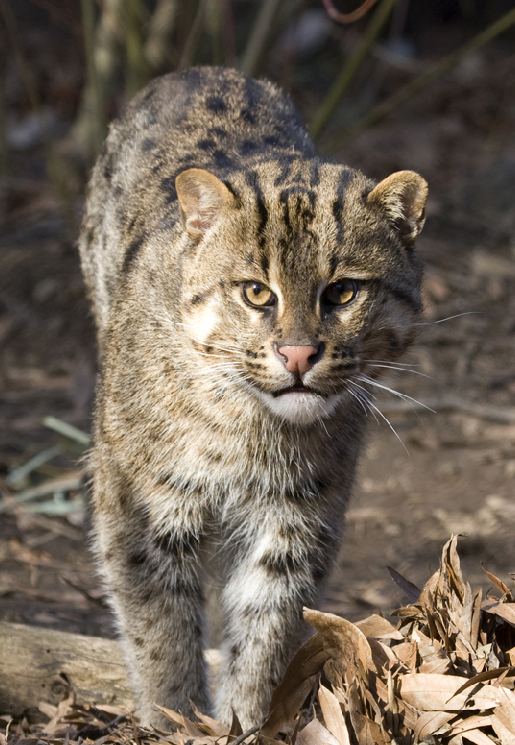
The fishing cat’s general distribution is southwest India, Sri Lanka, countries of the southern Himalayas, Bangladesh, Vietnam, Thailand, Burma, China, and the Indonesian islands of Java and Sumatra. However, these cats are not found all throughout this broad area because of their habitat preferences of densely vegetated areas and near to a water course or lake.
Fishing cats are are listed as endangered on the IUCN’s Red List of Threatened Species (Appendix II of CITES). They are protected over most of their range, with the exceptions of Bhutan, Malaysia and Vietnam. However their population status overall is not known.
They are threatened by habitat loss (mainly Wetland destruction) and the threat of human hunting for food and fur. People have drained many wetland areas to make room for farmland and roads. Pollution from industries has poisoned rivers and streams where fishing cats once fed. However, fishing cats appear to do well in suburban habitats, so they may prove adaptable to human activities that some other species.
Serval Cat of Africa
Cat of the Month ~ March 2011
The Serval (Leptailurus Serval), is a medium-sized African wild cat which has lion and cheetah ancestors. (It is the cheetah which is thought to have descended from ancient Servals).
The serval is native to Africa, where it widely distributed south of the Sahara.
Its main habitat is the savanna, although the light coloured (melanistic) strain of this animal are more usually found in mountainous areas at elevations up to 3,000 Metres or 10,000 ft
The Serval needs rivers and streams within its territory, so it does not live in semi-deserts or dry steppes. Servals also avoid dense equatorial jungles, although they may be found along forest fringes. They are able to climb and swim, but seldom do so.
Servals are nocturnal, and so hunt mostly at night, unless disturbed by human activity or the presence of larger nocturnal predators. Although the serval is specialized for catching rodents, it is an opportunistic predator whose diet also includes birds and small mammals, fish, and frogs. It has also been seen feeding on larger animals, such as deer, gazelle, and springbok. The Serval eats very quickly, sometimes too quickly, causing it to gag and regurgitate due to clogging in the throat. Small prey are though devoured whole. Like many cats, Servals are able to purr. The Serval also has a high-pitched call, and can hiss, cackle, growl and meow.
As part of its adaptations for hunting in the savannas, the Serval has extremely long legs (the longest of all cats, relative to body size) for jumping, which also help it achieve a top speed of 80 kilometres per hour (50 mph).
The long legs (and neck) also allow the Serval to see over tall grasses, while its very large ears are used to detect prey, even those burrowing underground. Servals have been known to dig into burrows in search of underground prey, and to leap 2 to 3.6 metres into the air to grab birds in flight or to pounce on ground prey. While hunting, the Serval may pause for up to 15 minutes at a time to listen with eyes closed.
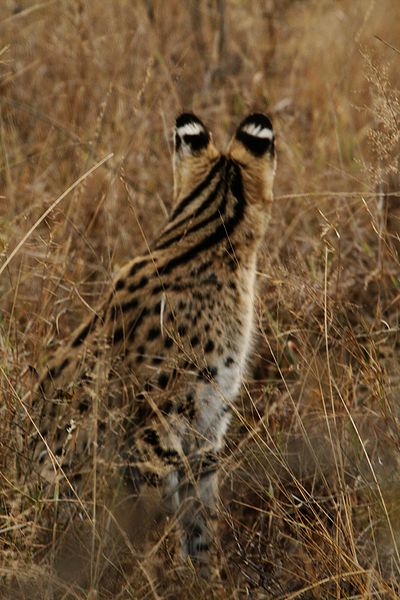
The eyespot markings or ocellus are used to signal
to Serval kittens when hunting.
The Serval then is an proficient killer, catching prey on an average of 50% of attempts (with a 67% success rate at night), compared to around one in ten attempts for most species of cat.
Servals are extremely intelligent, and demonstrate remarkable problem-solving ability, making them notorious for getting into mischief, as well as easily outwitting their prey, and eluding other predators. The Serval will often play with its captured prey for several minutes, before consuming it (where have we seen that before, Ed.). In most situations, Servals will ferociously defend their food against attempted theft by others. Males can be more aggressive than females.
Clouded Leopard
Cat of the Month ~ February 2011
Until 2006, there was thought to be a single clouded leopard species (Neofelis nebulosa). However, recent genetic and morphological studies have led researchers to conclude that there are two completely separate species of clouded leopards. Researchers estimate that the two species diverged approximately 1.5 million years ago due to geographical isolation.
Officially recognised as new species of Clouded Leopard (Neofelis diardi or ‘the Sundaland clouded leopard’) in March 2007, these cats were discovered on the Indonesian islands of Borneo and Sumatra. Sadly these cats are already on the endangered species list, with an estimated 18,000 of them remaining in the wild.
If you would like to find out more please visit the following websites
The National Geographic Big Cats Initiative
The Clouded Leopard Project Leopard Conservation & Research.
Larry the Tabby becomes Chief Mouser at No. 10
A four-year old tabby by the name of Laurence (or Larry), was brought by van to Number 10, Downing Street today. He was carried past the waiting press pack in a covered cat basket. After being introduced to (and picked up by) Prime Minister, David Cameron, he quickly took up his role as chief mouser and ratter by falling asleep in a chair for the rest of his first afternoon in Westminster.
Meanwhile, Mr Cameron made the following statement: “I’m delighted to welcome Larry to his new home. He came highly recommended to me by Battersea Dogs and Cats Home, who did a fantastic job looking after him.” “I’m sure he will be a great addition to Downing Street and will charm our many visitors.”
Another Downing Street spokesman said the former stray was a “good ratter” with a high “chase-drive and hunting instinct” (yeah, looks like it Ed), developed during his time on the streets, adding that the tabby.. “seems relaxed and easy going and enjoys playing with his toy mouse”. He added that, as he was an office cat rather than a family pet, “Downing Street staff would be paying for Larry’s food and other bills”.
The arrival follows weeks of speculation about potential pest control measures after a large black rat was seen (on TV, no less) scuttling past No 10.
Number 10 Downing Street has a long history of Chief Mousers as can be seen from this list Norman and I just put together.
(Norman says it would be nice to see some pictures of these other cats…. so perhaps we’ll do that on another day, eh Norm!)
There’s a couple more photographs of Lovely Larry below….
